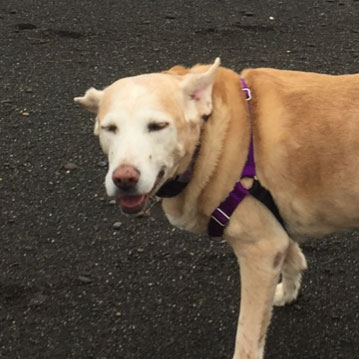
Dan Tran
Computer Science and Engineering
The device clips on to a dog's collar and keeps track of the dog's health statistics, provide GPS tracking, and stores the notes associated with that dog. This information can be accessed through the phone app by scanning the clip on the appropriate screen.


The home page of the applications allows the user to quickly look up the current dogs the user is walking, allowing easy access to the associated notes and health statistics.

After scanning the clip, the health tracking screen shows the health statistics for the dog. Information about the dog's heartrate, calories burned, blood pressue, and other statistics are tracked and shown. The screen includes an associated graphic for quick reference on the dog's general health.

The map screen displays a map of the area with the user shown using GPS tracking. It allows the user to quickly find a desired path to walk the dog, taking into account the desired lengths and points of interest or avoidance. It allows the user to track the dog in case it gets lost through the Track Dog feature. It allows the user to pin locations to the map to mark points of interest or points to be avoided.


After scanning the clip, the note screen shows a list of notes associated with the dog. From there the user can either edit an existing note or add a new note. Any changes made are automatically synced to the clip and can be retrieved again by scanning the clip.


Computer Science and Engineering

Computer Science and Engineering

Computer Science and Engineering

Computer Science and Engineering